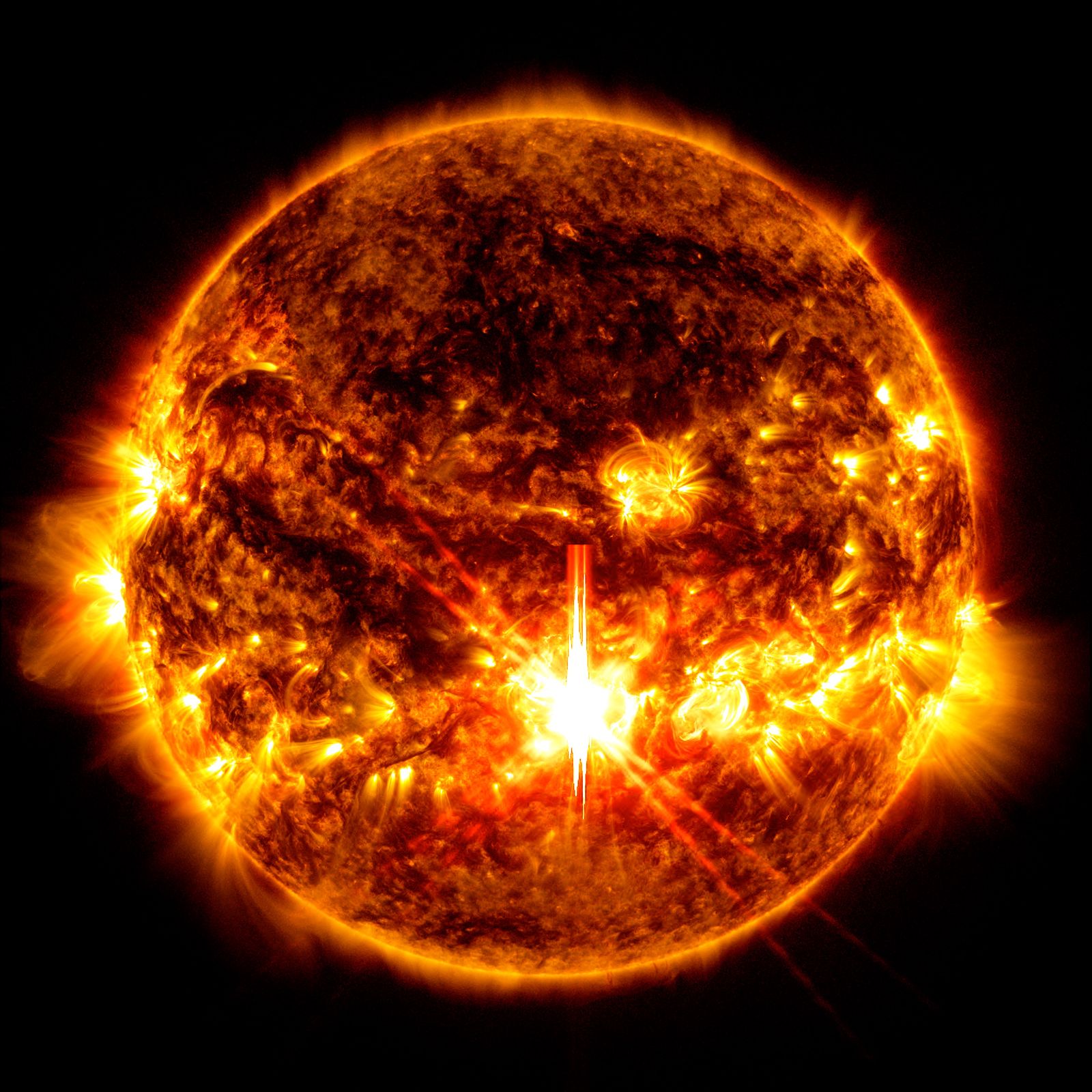Follow us on Google News (click on ☆)
This significant solar flare took place yesterday, on October 3, 2024. This event could lead to auroras visible from certain regions of Earth on October 5 or 6. The flare was classified as X9, the most powerful since 2017, and occurred in the context of increased solar activity.

NASA's Solar Dynamics Observatory captured this image of an X9.0 class solar flare, visible as the bright flash at the center, on October 3, 2024. The image shows a mixture of light from 171 angstroms and 131 angstroms, subsets of extreme ultraviolet light.
Credit: NASA/SDO
Solar flares occur when energy builds up in areas of intense magnetic fields, such as sunspots, and is released. This process fluctuates on an 11-year cycle, moving through phases of increasing and then decreasing activity. As the cycle approaches its maximum, the frequency of flares increases significantly.
Classified by intensity, flares range from A to X, with X being the most powerful category. An X9 flare ranks among the most powerful ever recorded, rivaling previous events, such as the X13.3 flare in 2017. Preliminary data indicates that a coronal mass ejection (CME) may have occurred, increasing the likelihood of geomagnetic storms.
The AR3842 region, the source of this flare, made headlines a few days ago with an X7.1 class flare. Less intense, that event had little impact on power grids and communication devices. However, yesterday's flare caused disruptions in radio communications in Europe and Africa. This is because particles ejected by solar flares interact with Earth's atmosphere, causing ionization. This ionization disturbs shortwave radio signals, which rely on a less dense atmospheric environment to travel. As a result, the signals lose energy.
Forecasts suggest that a G3-level geomagnetic storm might hit Earth. The orientation of Earth's magnetic field during the autumnal equinox makes such phenomena even more likely. This kind of solar activity can lead to spectacular auroras visible in several mid-latitude regions, including Europe and the United States. However, space weather is complex and difficult to predict. Experts caution that the appearance of auroras remains uncertain, depending on the fluctuations of coronal ejections and environmental conditions.

Pexels illustration image
Astronomers are closely monitoring these events, tracking their potential impact on Earth's technology. Communication networks and satellites must be prepared to face disruptions caused by these solar storms. Caution is advised, as is the hope of witnessing auroras in the sky during October 5 and 6.
What is a solar flare?
A solar flare is a sudden and intense release of energy on the surface of the Sun. This phenomenon occurs when solar magnetic fields reconnect, releasing large amounts of energy in the form of electromagnetic radiation. These flares manifest as the emission of X-rays, ultraviolet light, and sometimes by coronal mass ejections (CMEs).
When solar flares are accompanied by CMEs, charged particles reach Earth, triggering geomagnetic storms. These events disrupt satellites, power grids, and can induce polar auroras. Although this radiation does not penetrate Earth's atmosphere, it affects the upper atmosphere, interfering with radio communications and GPS.